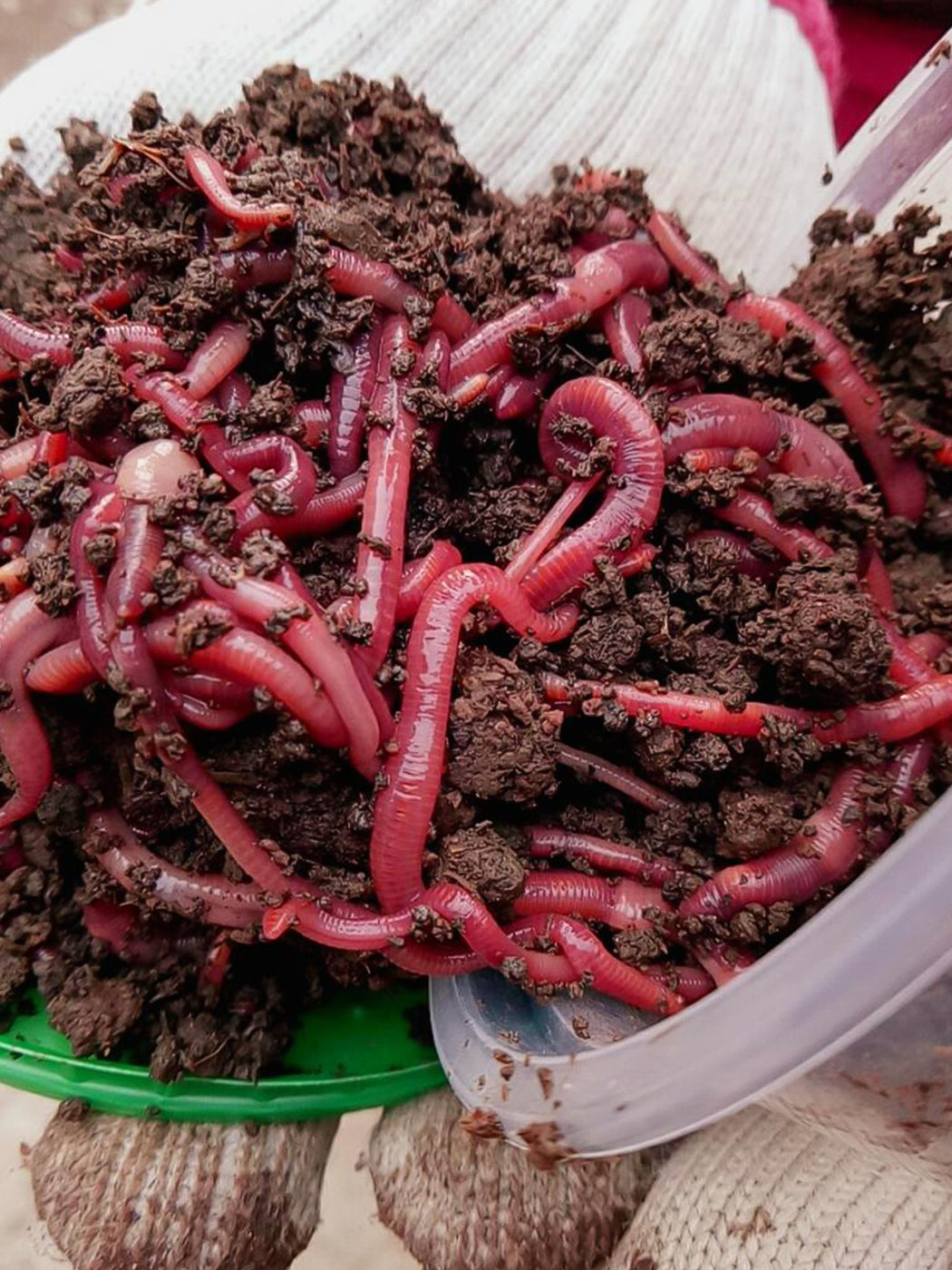Red Wigglers: The Unsung Heroes of Organic Waste Recycling
Red wigglers, or Eisenia fetida, serve as vital representatives in the organic waste reusing process, transforming thrown out products into beneficial vermicompost. As the globe progressively seeks options to battle waste buildup and enhance agricultural productivity, understanding the duty of these worms comes to be necessary.
What Are Red Wigglers?
The exceptional strength of red wigglers, medically understood as Eisenia fetida, underscores their crucial duty in organic waste recycling. These tiny, reddish-brown earthworms are normally discovered in breaking down raw material, such as garden compost piles and manure lots. Lake Hickory Bait. Unlike other earthworm species, red wigglers prosper in nutrient-rich atmospheres and are very efficient at breaking down natural materials, making them crucial for vermicomposting

(Red Wiggler Express)Along with their function in waste reduction, red wigglers add to soil health and wellness by boosting dirt structure and oygenation through their tunneling tasks (Lake Hickory Bait). Their visibility in composting systems not just enhances decay prices yet also advertises a lasting approach to squander administration, highlighting their importance in eco-friendly preservation initiatives
Advantages of Composting With Worms
Composting with worms, particularly red wigglers, provides countless benefits that boost both waste monitoring and dirt wellness. These worms efficiently damage down organic waste, converting it into nutrient-rich vermicompost that enriches dirt. This process speeds up disintegration, permitting for a quicker recycling of kitchen area scraps and various other organic materials compared to traditional composting approaches.
Furthermore, the vermicompost created by red wigglers is bristling with beneficial microorganisms, which help enhance dirt structure, aeration, and moisture retention. This improves the overall health and wellness of plants, promoting vigorous growth and boosted returns in gardens and agricultural setups. The usage of worms in composting lessens the production of greenhouse gases, such as methane, adding to a more sustainable waste management system.

Just How to Start Vermicomposting
Developing a vermicomposting system is an uncomplicated process that can produce considerable advantages for both waste administration and dirt enrichment. To begin, choose an ideal container, such as a plastic container or wooden box, with ample air flow holes to guarantee appropriate air flow. The dimensions ought to ideally be around 2 feet by 3 feet, enabling sufficient space for the worms to prosper.
Next, prepare bed linen product, which can include shredded newspaper, cardboard, or coconut coir. This bed linens needs to be moistened to develop an ideal habitat for the worms. As soon as the bed linens remains in area, present red wigglers (Eisenia fetida) right into the container, usually around one extra pound of worms for every single square foot of area.
Complying with the placement of worms, add natural waste, such as fruit and vegetable scraps, coffee premises, and crushed eggshells. Avoid including dairy, meat, or oils, as these can produce smells and draw in pests. Position the bin in a shaded, temperature-controlled location to preserve optimal conditions for worm activity. With these steps, you will efficiently initiate a vermicomposting system that adds to lasting waste monitoring and enriches your dirt.
Maintaining a Healthy And Balanced Worm Bin
(Red Wiggler Express)Keeping a worm container flourishing requires regular interest and like guarantee the health and wellness of the red wigglers and the effectiveness of the composting procedure. Correct maintenance begins with keeping an eye on the moisture degrees; the bin must perspire yet not soaked. An excellent general rule is to preserve a consistency comparable to a wrung-out sponge.
Oygenation is essential. Delicately blending the bed linen and food scraps every few weeks protects against compaction and ensures that all worms have accessibility to oxygen. Additionally, it is necessary to feed the worms properly. A well balanced diet of vegetables and fruit scraps, coffee premises, and smashed eggshells must be offered in moderation to stay clear of overfeeding, which can cause smells and pests.
Temperature regulation is one more important aspect. Red wigglers grow in an array of 55 to 77 degrees Fahrenheit. If the container comes to be also warm or cold, the worms might end up being worried - Lake Hickory Bait. Periodically check for signs of wellness, such as worm populace development and the visibility of healthy and balanced castings. By faithfully taking care of these elements, one can maintain a durable and efficient worm bin.
Effect on Sustainable Living
The successful upkeep of a worm container not only profits the health and wellness of red wigglers but additionally adds dramatically to sustainable living methods. By recycling natural waste, such as kitchen area scraps and yard particles, red wigglers aid draw away considerable amounts of material from landfills. This reduction in waste not just lowers greenhouse gas discharges More Help yet additionally reduces the environmental worry associated with waste administration.
Moreover, the spreadings created by red wigglers serve as a nutrient-rich organic plant food, improving dirt wellness and promoting plant development. This natural option to chemical plant foods sustains lasting farming and horticulture practices, lowering dependence on artificial inputs that can hurt ecological communities. Furthermore, worm composting fosters recognition of waste management, motivating individuals and areas to adopt even more lasting routines.

Final Thought
In recap, red wigglers offer as vital factors to natural waste reusing via their efficient disintegration of organic products. By incorporating vermicomposting right into waste monitoring approaches, people and areas can considerably minimize waste while promoting environmental sustainability.